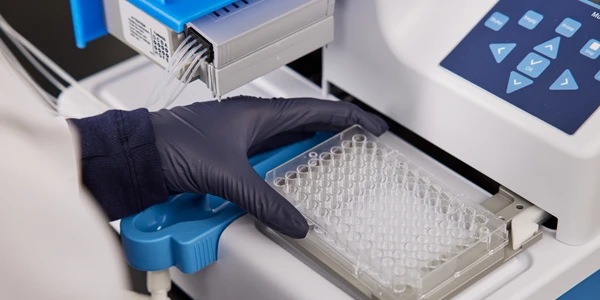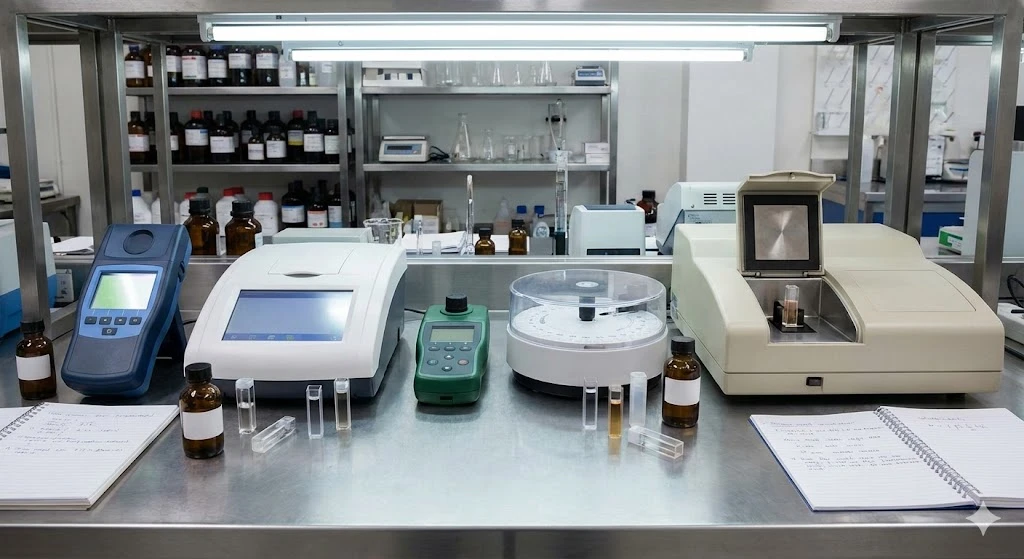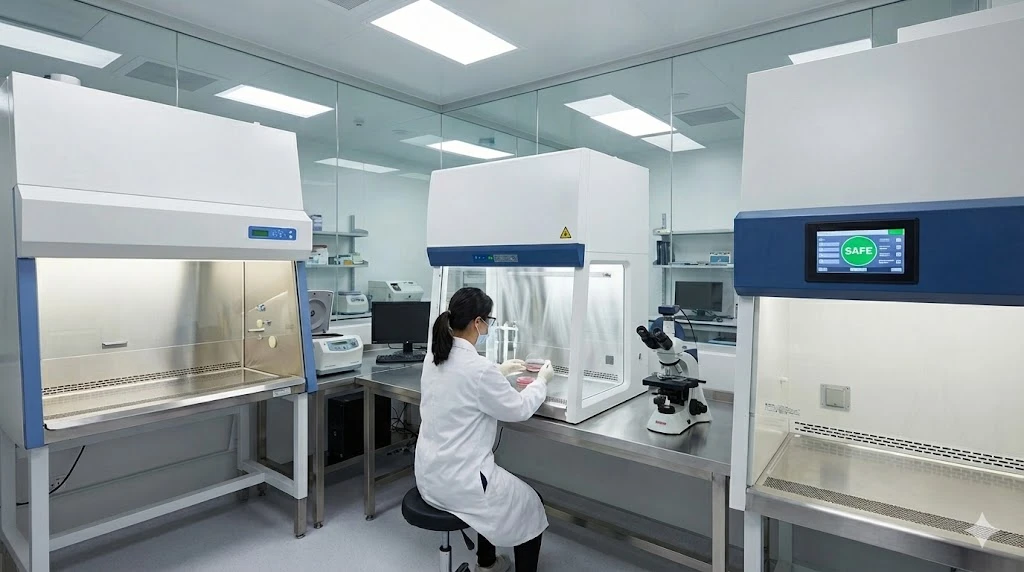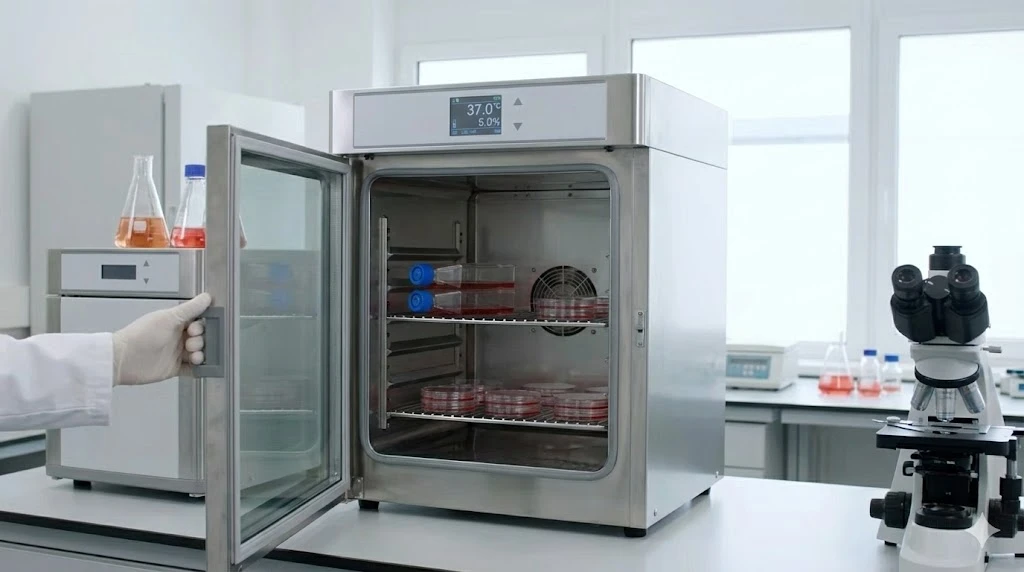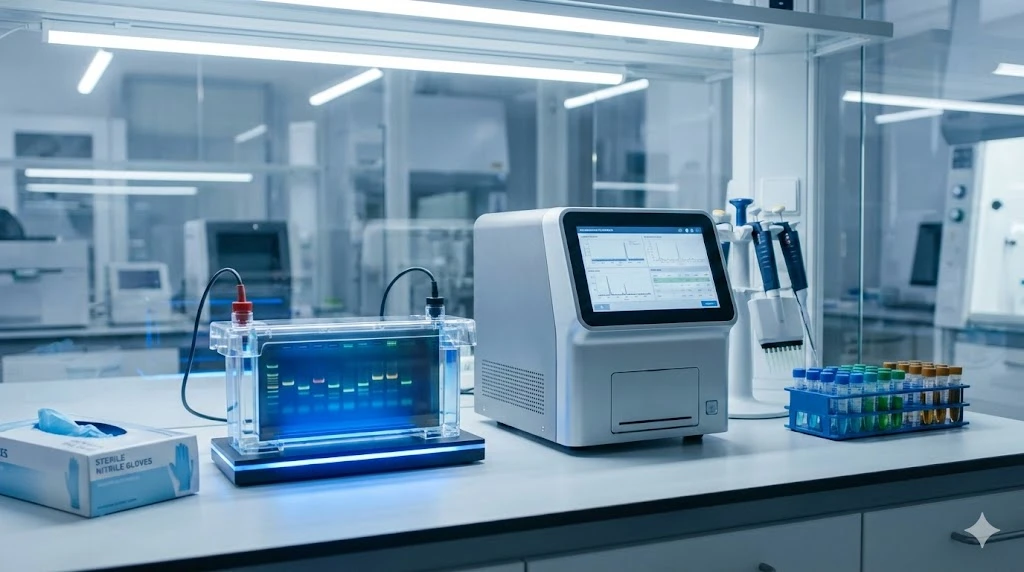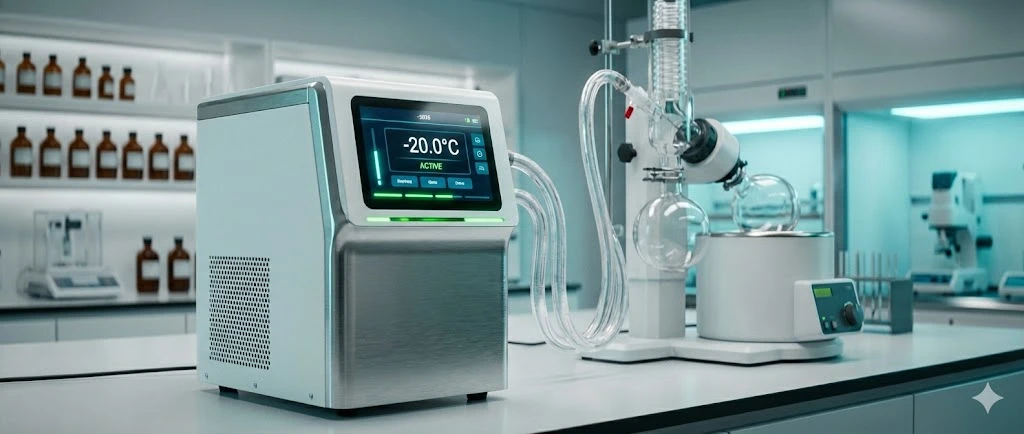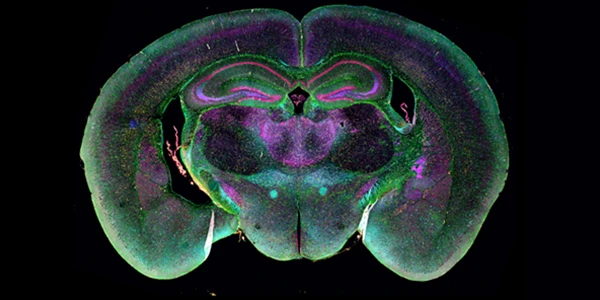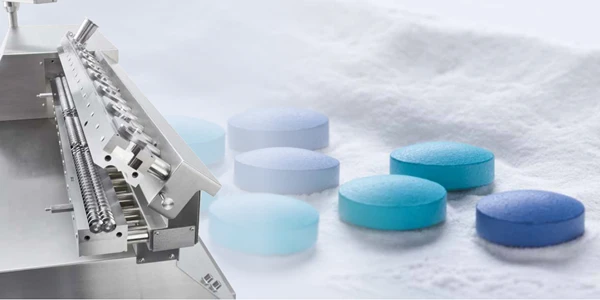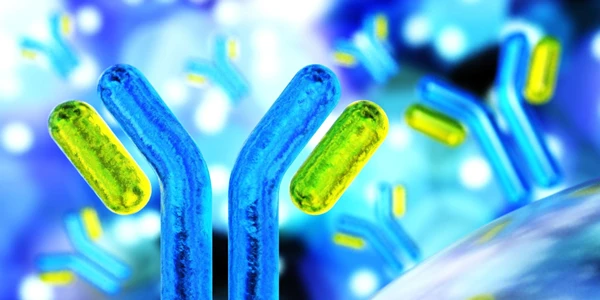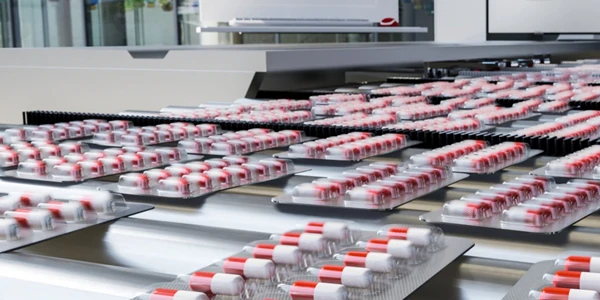Applications of Scintillation Counting in Environmental Monitoring
GEMINI (2025) The integrity of environmental safety protocols fundamentally relies on the precise detection of low-level radioactivity, making scintillation counting a cornerstone technology in environmental monitoring. This versatile methodology allows for the accurate measurement of various radionuclides across diverse sample types, including water, soil, and air, providing laboratory professionals with the essential data needed for regulatory compliance, source identification, and public health protection. The continued refinement of scintillation counting instrumentation and reagents ensures detection limits meet increasingly stringent regulatory thresholds, cementing its role in modern radiological assessment. Accurate quantification of radioactive isotopes is essential not only for verifying compliance with international treaties and national laws but also for establishing baseline radiological profiles of environments before industrial development or following natural events. Liquid scintillation counting (LSC) is indispensable for the highly sensitive detection of low-energy beta emitters, notably tritium and carbon-14, which are critical indicators in environmental monitoring studies. The underlying principle involves mixing a radioactive sample directly with a liquid scintillation cocktail. When a radionuclide decays, the emitted radiation interacts with the solvent molecules of the cocktail. This energy transfer excites the solvent, which then transfers the energy to fluor molecules (fluors or primary scintillators). These fluors subsequently de-excite by emitting photons of light. These light pulses, or scintillations, are detected and amplified by photomultiplier tubes (PMTs). The key advantage of LSC is the Quenching Mechanisms in LSC: Quenching Type Description Mitigation Strategy Chemical Quenching Interference by substances (acids, bases, organic solvents) that chemically impede the energy transfer process before it reaches the fluor. Optimize sample-to-cocktail ratio; use specialized, high-capacity cocktails. Color Quenching Light pulses are absorbed by colored components in the sample (e.g., iron oxide, organic dyes) before reaching the PMTs. Employ sample preparation techniques like bleaching or solvent extraction; utilize external standard methods (e.g., ESCR). Accurate results in environmental monitoring necessitate robust quench correction. Techniques such as the External Standard Quench Indicator (ESCR) method, which uses a calibrated external gamma source to assess counting efficiency, are vital for correcting spectral shifts and achieving reliable quantification across varied sample matrices. The use of modern digital LSC instruments has further enhanced performance by offering superior pulse shape analysis and higher energy resolution, improving the differentiation between background noise and true scintillation events. Effective environmental monitoring requires the ability to target and quantify specific radionuclides that pose ecological or human health risks. Scintillation counting provides methodologies tailored for different emission types and concentrations. Tritium, a pure beta emitter with a very low maximum energy, is often monitored near nuclear facilities and waste repositories as it easily incorporates into water molecules. Due to its low energy, samples often require extensive preparation, such as distillation or electrolytic enrichment, before LSC can accurately measure the extremely low activity concentrations relevant to groundwater and surface water monitoring. For carbon-14, which is naturally occurring but also a product of human activity, LSC is used to determine its age and cycling in atmospheric samples and biological materials, providing crucial data for climate studies and dose assessment. Sample preparation typically involves converting the carbon to a suitable counting form, such as benzene or carbon dioxide absorbed into a specific cocktail. For environmental matrices like soil and sediment, which require the analysis of alpha- and medium-to-high energy beta emitters (e.g., uranium isotopes, plutonium, strontium-90), specialized scintillation counting is employed. Alpha-particle spectroscopy using silicon-based detectors is often preferred for ultimate resolution, but solid scintillation counting methods, particularly those utilizing zinc sulfide (ZnS) scintillators, offer a simplified, large-area approach. ZnS(Ag) screens, when coupled to a PMT, are sensitive to the high-ionization density of alpha particles and insensitive to beta radiation, allowing for selective alpha counting. Similarly, high-energy beta emitters require careful consideration of self-absorption effects within the sample matrix. Chemical separation followed by mounting the purified sample on a planchet and counting using a gas-flow proportional counter or a thin-window scintillation counting system (like plastic scintillators) is a standard procedure. The high sensitivity of these techniques allows for the detection of activity levels well below regulatory limits, providing confidence in the radiological assessment of contaminated sites. Gamma-ray scintillation counting is central to both laboratory analysis and in situ environmental monitoring due to the highly penetrating nature of gamma radiation. Thallium-doped sodium iodide, NaI(Tl), is the most common scintillator crystal employed. When a gamma photon interacts with the crystal, primarily via the photoelectric effect, Compton scattering, or pair production, the resulting energy is converted into a flash of light. The intensity of this light flash is proportional to the energy deposited by the gamma photon. In the laboratory, NaI(Tl) detectors, often housed within massive lead shields to minimize background radiation, are used for the quantitative analysis of bulk samples (e.g., environmental soil, vegetation, or water residues). The primary limitation of NaI(Tl) is its moderate energy resolution compared to high-purity germanium (HPGe) detectors; however, its high detection efficiency, ruggedness, and low cost make it the preferred tool for rapid screening and routine analysis in high-throughput environmental monitoring programs. For field operations, portable gamma scintillation counting devices are essential for emergency response, geological surveys, and fixed perimeter monitoring. These ruggedized NaI(Tl) detectors allow personnel to rapidly identify and map areas of elevated gamma exposure, providing real-time data for decision-making. Continuous, passive monitoring systems also utilize NaI(Tl) or specialized large-volume plastic scintillators positioned around critical infrastructure to detect even minute increases in ambient radiation levels, thereby acting as an early warning system. Achieving reliable and defensible data in environmental monitoring hinges on rigorous quality assurance and quality control (QA/QC) practices applied to the scintillation counting process. This ensures that reported activity concentrations are accurate, precise, and traceable. Key Quality Assurance Protocols: Detector Calibration and Performance Checks: Regular calibration using certified reference materials (CRMs) with traceable activity is mandatory. Performance checks, including background counts and the figure of merit determination, must be performed daily or before each batch of samples. Sample Preparation Standardization: Strict adherence to validated protocols is required to minimize matrix effects and ensure consistent sample geometry. This is particularly crucial in LSC to manage variable quenching effects. Cross-Contamination Control: Meticulous cleaning of glassware, counting vials, and processing equipment between samples is essential, especially when processing samples with vastly different activity levels (e.g., background soil followed by a near-field effluent). Reporting of Minimum Detectable Activity (MDA): Every result must be reported with its associated uncertainty and a calculated MDA, demonstrating the system's analytical capability relative to regulatory limits. The MDA calculation must appropriately account for background variation and counting efficiency. Participation in Inter-Laboratory Proficiency Tests: Regular participation in blind proficiency testing programs provides external validation of the laboratory's overall performance and methodology in scintillation counting. These protocols ensure that analytical results from scintillation counting instruments are robust, allowing regulators and scientists to make informed decisions regarding environmental protection and public safety. Standardized practices across laboratories are crucial for the comparability of environmental data on a regional and international scale. Scintillation counting continues to evolve, driven by demands for increased sensitivity, speed, and versatility in environmental monitoring. Future developments focus on digital pulse processing, which enhances the separation of true scintillation signals from noise, thereby lowering detection limits. Furthermore, the development of novel scintillation materials, such as solid organic scintillators with specialized chemistries, promises improved chemical resistance and selective detection capabilities for complex matrices. Integrating these advanced scintillation counting techniques with automated field sampling and remote data transmission systems will further streamline environmental monitoring processes, moving towards fully autonomous detection networks capable of rapid, wide-area radiological surveillance. This ongoing innovation ensures that the methodology will remain a vital tool for environmental protection for decades to come. The main advantage is LSC’s superior detection efficiency for low-energy beta emitters like tritium and carbon-14. Since the sample is mixed directly with the scintillating cocktail, the energy loss due to self-absorption or attenuation is minimized, enabling the quantification of environmental activity concentrations near or below natural background levels. Color quenching occurs when colored components within the environmental sample (e.g., humic acids in water) absorb the light photons emitted by the scintillator, reducing the total light signal received by the PMTs. This directly lowers the apparent counting efficiency, leading to an underestimation of the true radionuclide activity. Robust quench correction methods must be applied to mitigate this effect. Thallium-doped sodium iodide, NaI(Tl), is the preferred material for routine real-time gamma monitoring. While its energy resolution is inferior to HPGe, NaI(Tl) crystals offer excellent detection efficiency, especially for high-volume environmental analysis, coupled with superior mechanical ruggedness and lower operating costs, making them ideal for both stationary and portable field instruments. This article was created with the assistance of Generative AI and has undergone editorial review before publishing.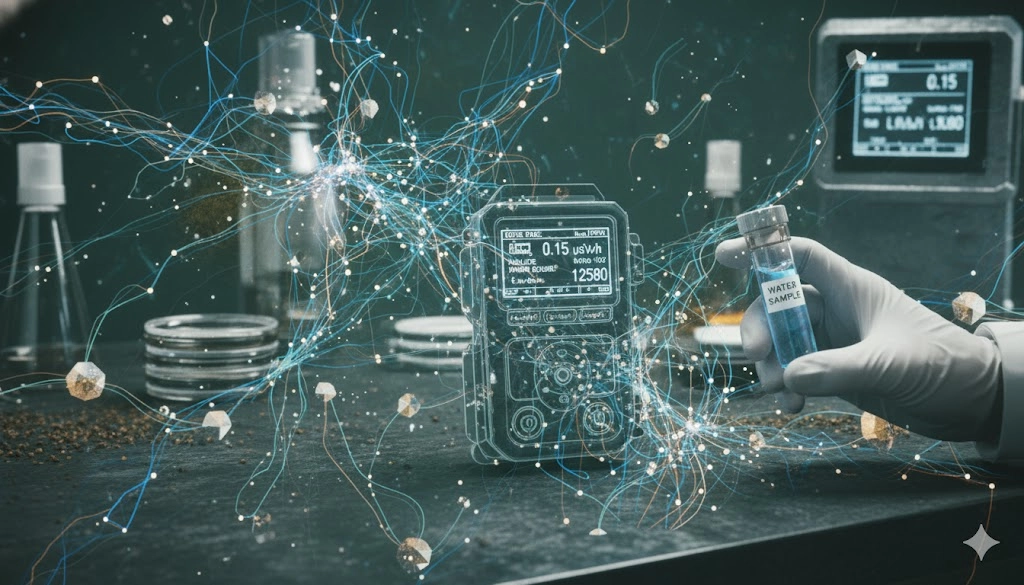
Mastering Liquid Scintillation Counting (LSC) for Low-Energy Emitters
Targeted Radionuclide Measurement in Environmental Monitoring
Monitoring Tritium and Carbon-14 in Aquatic and Atmospheric Systems
Alpha- and Beta-Spectroscopy for Soil and Sediment Analysis
Gamma Scintillation Detection in Field and Laboratory Settings
Assuring Data Quality and Standardization in Scintillation Counting
The Future of Scintillation Counting in Environmental Assessment
Frequently Asked Questions on Scintillation Counting
What is the primary advantage of liquid scintillation counting (LSC) over Geiger-Müller counting for environmental samples?
How does color quenching affect scintillation counting results in environmental monitoring?
Which scintillation material is typically used for real-time gamma environmental monitoring and why?
